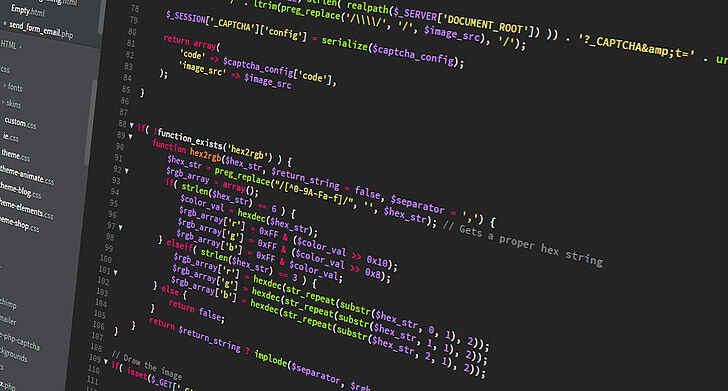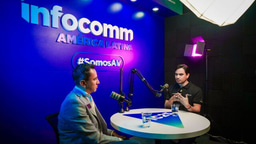Redefining AV Control Systems: Modern Programming Frameworks

I started my career as an AV engineer - writing SIMPL code late at night, troubleshooting serial strings, and mapping feedback signals by hand. Back then, systems like Crestron SIMPL or AMX NetLinx were the standard, and they served us incredibly well. But they were also closed worlds: every platform had its own language, its own logic, and required its own set of certifications.
Fast-forward to today - the AV industry is changing faster than ever.
We’re seeing web-based and open-source technologies step into the control space, and honestly, it’s one of the most exciting shifts I’ve seen in my 15+ years in the field.
The Old Way: Proprietary Islands
Traditional control systems demanded deep specialization. If you knew SIMPL, you were a Crestron programmer. If you spoke NetLinx, you were AMX. Each skillset was valuable, but not easily transferable. It made hiring, training, and scaling teams harder - especially when every manufacturer had its own syntax and ecosystem.
The New Wave: Open and Modern
Now we’re seeing control SDKs like Crestron HTML5 + Simpl#, AMX MUSE, and Aurora ReAX adopting HTML5, Node.js, Angular, and React.
At Wave AV, we’ve taken this approach even further. Our own control platform uses Node.js for backend logic and React for custom touch interfaces, running on our own embedded hardware. It’s web-native, cross-platform, and integrates directly with network devices using standard protocols - no proprietary middleware needed.
Why It’s Better - In the Real World
1. Easier to Find and Train Talent
You don’t need to train someone in a closed language that only exists in the AV world. Thousands of developers already know React, Node.js, or Angular. That means shorter onboarding, faster project ramp-ups, and easier collaboration between AV and IT.
2. Shared Knowledge Across Industries
Modern frameworks are used everywhere — from LinkedIn and Instagram to Amazon and financial platforms. So, when you train your team on these technologies, they gain skills that are relevant far beyond AV. That’s powerful for retention and long-term growth.
3. Faster Development Cycles
Web-based frameworks let you build, test, and deploy much faster. Real-time updates, version control (Git), and modular architecture mean we can roll out changes in minutes instead of days.
4. Stronger Security
Modern frameworks are backed by huge global communities that constantly update and patch vulnerabilities. Using these platforms gives us enterprise-grade cybersecurity “for free,” aligning our control systems with IT best practices.
5. Platform Agnostic and Scalable
You can run a Node.js controller on a tiny Linux SBC, a cloud server, or even virtualized infrastructure. This flexibility means your control logic isn’t tied to a single manufacturer’s hardware.
6. Beautiful and Consistent UI
With frameworks like React, we can design interfaces that look and feel modern - dynamic dashboards, responsive layouts, and integrated data visualizations that clients actually enjoy using.
7. Easier Integration with Everything Else
APIs are the common language of today’s digital world. Modern frameworks make it seamless to connect with calendar systems, occupancy sensors, video conferencing platforms, or even AI-based analytics.
8. Long-Term Sustainability
Because these technologies are open and widely adopted, they’re future-proof. You’re not betting your system’s longevity on a single manufacturer’s roadmap.
The Trade-Off - and Why It’s Worth It
Of course, there’s one downside: now we’re competing for developers with the broader tech industry. But that’s not really a bad thing. AV is becoming part of the IT and software ecosystem — and that’s exactly where we need to be.
The future of AV control is open, connected, and code-driven.
By embracing technologies like HTML5, Node.js, and React, we’re not just keeping up — we’re bringing AV into the same innovation cycle that drives the global tech industry.
At Wave AV, this mindset has changed the way we design systems and how we think about integration itself. AV control is no longer just about buttons and relays — it’s about software, scalability, and user experience.






Please sign in or register for FREE
If you are a registered user on AVIXA Xchange, please sign in
I am pleased to be working alongside this genius of the AV industry. Success, Pedro.
Time goes on, and there is a lot of cool programming languages, but proprietary languages and control systems are created to make development faster and easier. A lot of things from adult languages are not needed in 99% AV projects.
I believe that you can build interface faster using GUI design tool (VTPro, GUI Designer and etc.) rather than coding HTML5.
I have seen big programs of large integrators where they are trying to develop one UI and one program for all kind of standard rooms and just configure them with .CSV data files just to save on development for each room individually. It looks fun.
Good point, Aleksey. Thank you for the comment!